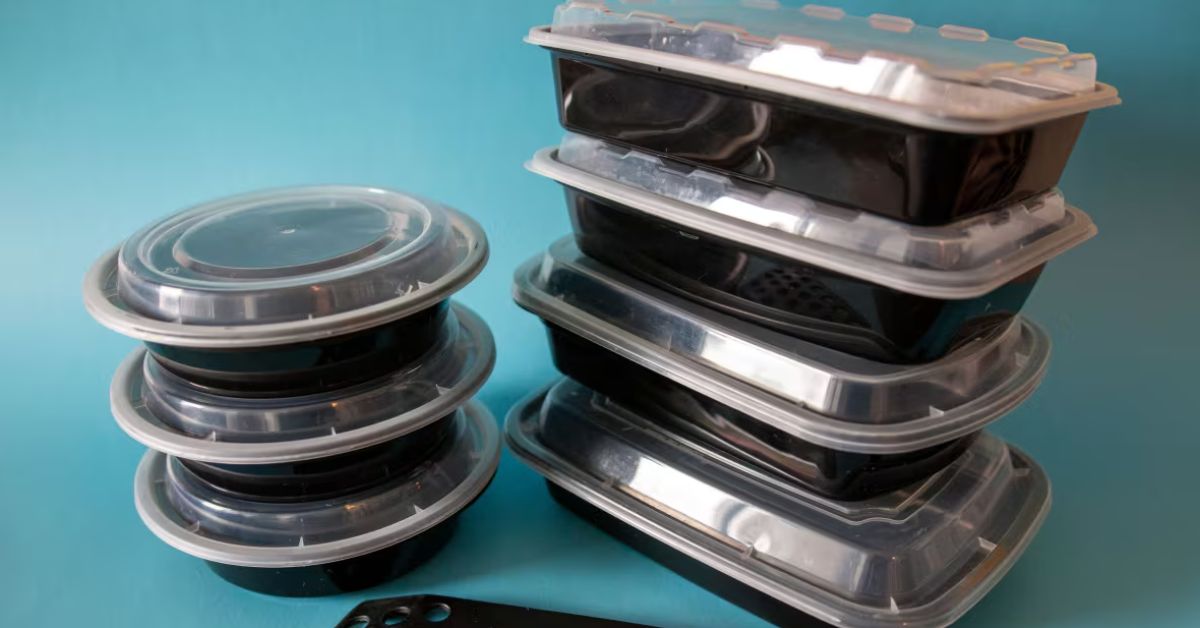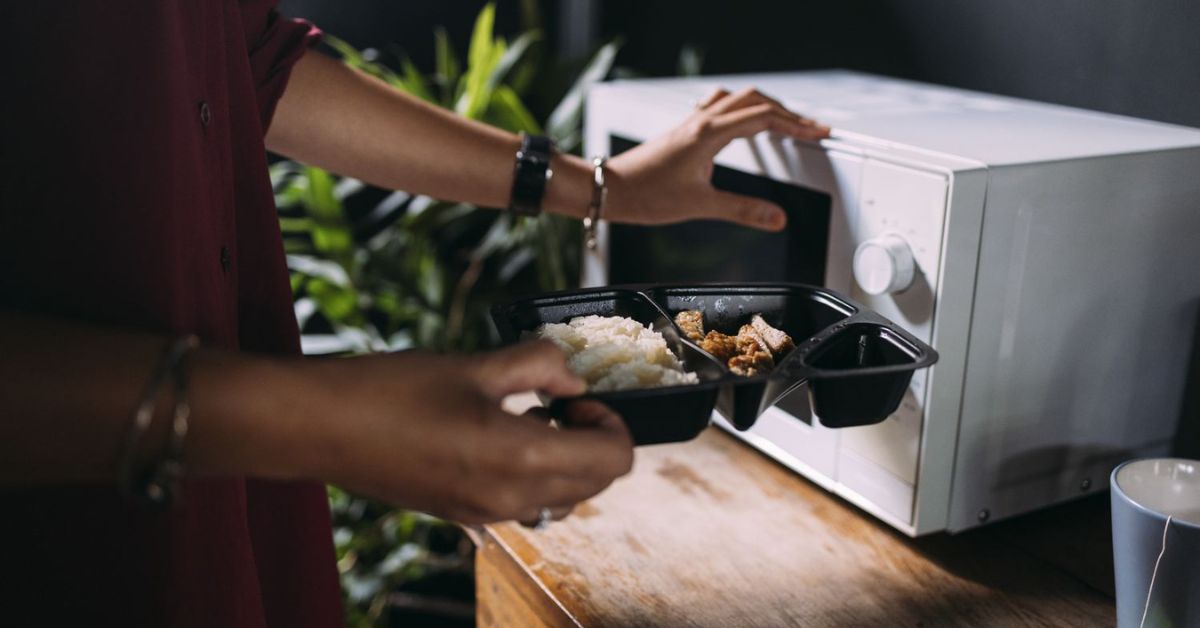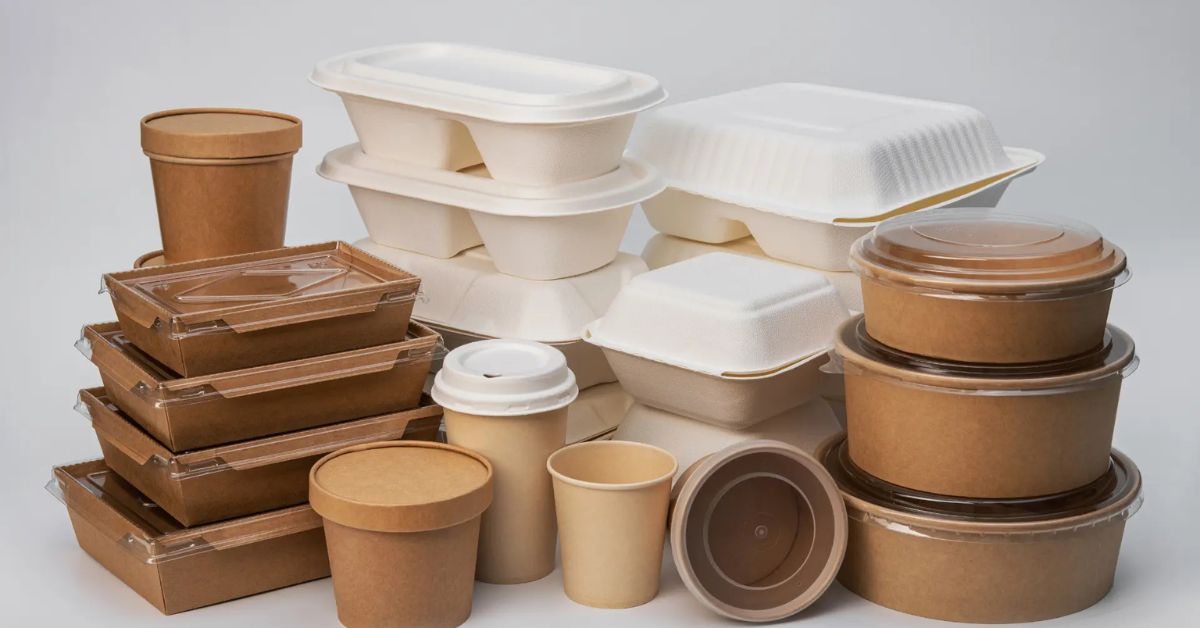What’s in Your Food Parcel? The Black Plastic Story Most Indians Don’t Know
(Representational featured image generated using AI)
Open any food parcel from a restaurant or cloud kitchen today, and you’re likely to see the same thing — a sleek black plastic container holding your steaming biryani, paneer curry, or noodles. Whether it’s from a street-side joint or a five-star kitchen, black plastic has quietly become the face of food packaging across Indian cities.
But beyond its polished look lies an important question: what exactly is this plastic made of — and is it safe for your food?
This feature takes a closer look at black plastic in India’s food industry, tracing its rise, unpacking what makes it different from regular plastic, and exploring whether it poses risks that we haven’t fully acknowledged yet.
The rise of black plastic in Indian food delivery
Black plastic containers were not always the norm. Their rise coincided with the explosion of food delivery services in India around the mid-2010s, when platforms like Swiggy, Zomato, Uber Eats, and a wave of cloud kitchens transformed the way urban India accessed restaurant food.
For food businesses working with tight margins, black plastic offered everything they needed — heat resistance, durability, affordability, and a premium appearance that concealed stains or spills from oily and spicy foods.
By 2018–19, black containers had become a staple across metropolitan kitchens. A 2022 packaging waste audit by the Centre for Science and Environment found that over 90 percent of food delivery containers collected in Delhi, Bengaluru, and Mumbai were black plastic trays.
What makes black plastic different?
At first glance, black plastic may not seem any different from the transparent or white plastic often used for salads, dahi, or takeaway boxes. But key differences emerge in how it’s made and how it functions.
To give black plastic its uniform appearance, manufacturers use carbon black pigments. These pigments absorb infrared light, which means black plastic cannot be detected by most recycling machines. As a result, even if the material is technically recyclable, it usually ends up in landfills or gets incinerated.
 Black plastics fail to be detected under infrared light, making it difficult to recycle. Picture source: CBC.
Black plastics fail to be detected under infrared light, making it difficult to recycle. Picture source: CBC.
The bigger concern, however, lies in what the plastic is made from. Many black plastic containers are manufactured using recycled materials, often a mix of industrial plastic waste, scrap, and sometimes even e-waste. Global studies, including one by the United Kingdom-based Food Packaging Forum, have found traces of potentially harmful substances such as flame retardants and heavy metals in black plastic food containers made from recycled sources.
In India, where over 70 percent of plastic recycling occurs in the informal sector, it is difficult to trace the origin or ensure the quality of recycled plastics used in food containers. This raises serious concerns about the lack of regulation and oversight in materials that come in direct contact with food.
Is black plastic more dangerous than regular plastic?
Here’s where it gets important — and yes, a bit technical.
Not all black plastic is dangerous.
But it carries a higher risk than regular transparent food-grade plastic.
Let’s break it down:
1. Lower traceability
Clear plastics like PET (Polyethylene terephthalate) or virgin PP (Virgin Polypropylene) used in food packaging are usually produced under stricter controls. Black plastic is often made from mixed or unknown recycled materials, where source tracking is weak.
➡️ Risk: Higher chances of unsafe chemical additives or contamination.
2. Harder to regulate
Because of its color and how it absorbs infrared light, black plastic cannot be sorted or identified by most recycling and quality inspection systems.
➡️ Risk: Makes enforcement of food-safety norms harder.
3. Greater chance of chemical leaching
While polypropylene is generally microwave-safe, its safety depends on its purity. If black containers are made from recycled PP mixed with additives, there’s a greater chance of chemical leaching, especially when exposed to heat, oil, or acidic foods — which are common in Indian meals.
 Heating black plastic containers might cause health concerns. Picture source: Health
Heating black plastic containers might cause health concerns. Picture source: Health
➡️ Risk: Potential exposure to harmful substances like phthalates or brominated compounds, particularly when reheating food in these containers.
The data behind the concern
- India’s food delivery sector handles over four million orders daily (RedSeer, 2023).
- 35 percent of India’s plastic packaging demand is driven by the food and beverage industry (Plastic Packaging Market Report, 2023).
- The Central Pollution Control Board (CPCB) reports that only 60% of plastic waste is recycled, and black plastic is among the least recycled due to detection limitations.
- A 2020 global report by the Ellen MacArthur Foundation found that less than 10 percent of black plastic is effectively recycled.
In other words, black plastic is not only hard to recycle but also difficult to regulate, thus increasing both environmental and health concerns.
What can we do differently?
While black plastic may be convenient, there are practical steps consumers and food businesses can take to reduce risk:
 Switching to biodegradable options benefits humans and the environment. Picture source: Flavorish.
Switching to biodegradable options benefits humans and the environment. Picture source: Flavorish.
- Avoid reheating food in black plastic containers. Transfer food to a glass or stainless steel before microwaving.
- Encourage restaurants and caterers to explore clear, food-safe alternatives or compostable packaging.
- Check for food-grade certification symbols or manufacturing labels on containers, especially when reusing them.
- Share this knowledge — many food vendors and customers simply don’t know that black plastic could be a problem.
Food delivery platforms like Swiggy and Zomato could also take the lead in encouraging safer packaging options and helping vendors make the shift toward sustainable materials.
The bottom line
Black plastic food containers have quietly taken over how Indians receive their meals — at homes, offices, and events. While not all of them are harmful, many carry hidden risks due to unregulated sourcing, low recyclability, and unclear safety standards.
The real issue isn’t just the plastic — it’s how little we know about what touches our food.
Because the food you love deserves packaging that loves you back.
What are the alternatives?
Replacing black plastic may seem difficult, but India is already home to several sustainable packaging innovations that offer safer, more environmentally responsible options. Some of the most promising alternatives include:
- Bagasse containers
Made from sugarcane waste, these are microwave-safe, compostable, and ideal for both dry and wet foods.
- Used by: Chuk (Uttar Pradesh), which supplies to Indian Railways and event caterers.
- Areca palm leaf plates and bowls
Crafted from naturally fallen palm leaves, they are chemical-free, biodegradable, and suited for hot, oily foods.
- Popular among: Eco-conscious caterers and restaurants, especially in South India.
- Paper-based containers with biodegradable liners
When coated with plant-based PLA (polylactic acid) instead of plastic, these containers are leak-proof and compostable.
- Adopted by: Food startups and vendors looking for scalable, printable, brand-friendly options.
- Reusable steel tiffin systems
Ideal for local food delivery, these eliminate single-use packaging entirely.
- Biodegradable tableware from agricultural waste
Brands like Ecoware make disposable plates and bowls from wheat and rice husk, used in hospitals, airports, and canteens.
- Eco-product platforms
Companies like Brown Living offer curated, eco-friendly packaging solutions for small and medium-sized food businesses.
- Industry-led pilot initiatives
Food delivery platforms like Zomato and Swiggy have begun trial programs encouraging partner restaurants to adopt sustainable packaging, although these efforts are still limited in scope.
These alternatives show that scalable, food-safe, and environmentally conscious options already exist in India. The challenge now lies in increasing awareness, accessibility, and widespread adoption across the food industry.
Edited by Leila Badyari and Saumya Singh
Sources
News